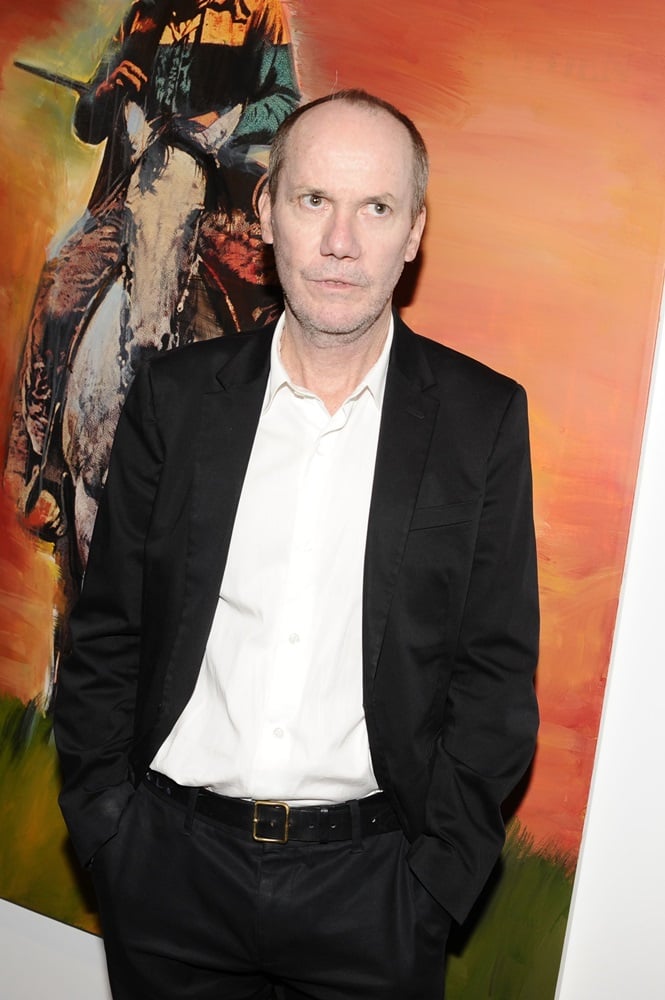
On the eve of Richard Prince’s upcoming reprisal show of his “Canal Zone” paintings at Gagosian Gallery on Madison Avenue (May 8–June 14), the artist is cranking out writing that exceeds the usual length of the pithy punch-lined monochrome joke paintings that made him famous. Prince penned a 1,984–word short story titled “Eden Rock” that appears in the May issue of Gagosian’s brand new gallery newspaper. He describes it as “On the Beach meets Lord of the Flies meets 28 Days Later.” We would add to that hints of the recent zombie flick and spoof Warm Bodies, as well as the book World War Z: Oral Dispatches from the Zombie War, the faux war-reporting style book by Max Brooks that was turned into an arguably disastrous film flop starring Brad Pitt.
Prince’s story starts out on Christmas day, when the main character “Charles Company” and his family arrive on the island of St. Barts (where, coincidentally, Larry Gagosian maintains a residence) to find that most of the world is “wiped out in a nuclear holocaust. (There’s no blame. There’s no ‘who started it.’) It just happens.” The family is immediately thrown into the chaos and commotion where they will shortly be confronted, Company predicts, with a world where “a bottle of water is worth more than a Rolex.” Added to that, “tribes” are quickly forming. “Based on family, friendship, skills, strength … and they’re taking over the different hotels that are spread out over the island.”
Writes Prince: “So you get the idea.”
Yep. We get it. It’s the same plot of every zombie apocalypse movie and Walking Dead episode. Towards the conclusion of the story, Prince helpfully informs the reader “You or another screenwriter can fill in the blanks of what happens next.”
Richard Prince’s short story ‘Eden Rock’ appears alongside ‘Canal Zone’ paintings in Gagosian Gallery’s new newspaper.
Photo: Rob McKeever, courtesy Gagosian Gallery.
Last week, Gagosian Gallery put out a press release for the upcoming “Canal Zone” show, penned by Prince himself. As most art world observers are aware, the artist engaged in a lengthy, closely-watched legal battle over “fair use” with photographer Patrick Cariou after he used images from Cariou’s book Yes Rasta in numerous Canal Zone paintings. In 2009 Cariou sued Prince and Gagosian for copyright infringement, and in 2011 a judge ruled against Prince and ordered that remaining copies of the exhibition catalogue and unsold paintings be destroyed. That decision was largely overturned last month on appeal.
In the release, before launching into a paragraph about them, Prince writes,“I don’t want to talk about where the Rastas came from. Like most images I work with they weren’t mine. I didn’t know anything about Rastas. I didn’t know anything about their culture or how they lived. I had plenty of time to find out. What I went with was the attraction.”
Interestingly one of the arguments Cariou put forth in his lawsuit was the difficulty of gaining access to the Rasta culture; his photos in Yes Rasta, were the product of having lived with them in the mountains of Jamaica for six years.
Prince references the “Eden Rock” story in the Canal Zone release, describing how these paintings started off as a “pitch” about the family landing in St. Barts on Christmas Day. Prince says the story came to him in 2006 when he was staying on St. Barts. “This light bulb went off… Maybe when I was sitting there looking out into the ocean, staring at one of those big-ass cruise ships.”
At the end of “Eden Rock” all the threads come together. We find out that “part of the passenger manifest of the Norweigan Princess includes seven members of a reggae band … all of them are way ahead. They’ve split the ship by the second day. Post-catastrophe on their radar came up as a huge blip on their screens and they read it like a book. A book without a happy ending.”